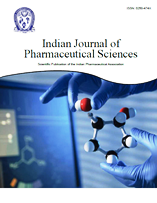Abstract
Effects of Infiltration and Intraseptal Anaesthesia on Dental Pulp and Gingival Blood Flows
Faculty of Stomatology in Pancevo, Zarka Zrenjanina, Pancevo 26000, 1King’s College London, Guy’s Hospital, London, United Kingdom (UK), 2School of Dentistry, University of Belgrade, Serbia, Rankeova, Belgrade, Serbia
Correspondence Address:
Vladimir Biocanin, Faculty of Stomatology in Pancevo, Zarka Zrenjanina, Pancevo 26000, E-mail: vladimirbiocanin@gmail.com
The aim of this study was to compare the effects of infiltration anaesthesia and intraseptal anaesthesia on the pulpal blood flow and gingival blood flow in healthy human subjects. Articaine (4 %) with adrenaline (1:100 000) was administered to 10 participants (20-25 y old) using the intraseptal anaesthesia technique (0.6 ml) in the region of upper central incisor. 2 w later, 1.8 ml of the same anaesthetic was administered using the infiltration anaesthesia technique. Laser Doppler flowmeter was used to measure pulpal blood flow and gingival blood flow. The infiltration anaesthesia resulted in a significant reduction of pulpal blood flow compared to baseline, in contrast to intraseptal anaesthesia. There was no significant difference in pulpal blood flow between intraseptal anaesthesia and infiltration anaesthesia. Laser Doppler flowmeter detected statistically significant reduction in gingival blood flow both for intraseptal anaesthesia and infiltration anaesthesia compared to basal values. The gingival blood flow levels between intraseptal anaesthesia and infiltration anaesthesia were not significantly different. High levels of individual variability between participants were detected for both pulpal blood flow and gingival blood flow. No statistically significant differences were observed in the pulpal or gingival blood flow, induced by intraseptal and infiltration anaesthesia. There was a tendency of more reduced gingival blood flow after intraseptal anaesthesia. Lower pulpal blood flow reduction caused by intraseptal anaesthesia could be important in cases of compromised pulps with already reduced blood flow. On the other hand, slightly higher gingival blood flow reduction caused by intraseptal anaesthesia may be favourable for better visualization of the operating field during surgical procedures.
Full-Text | PDF



